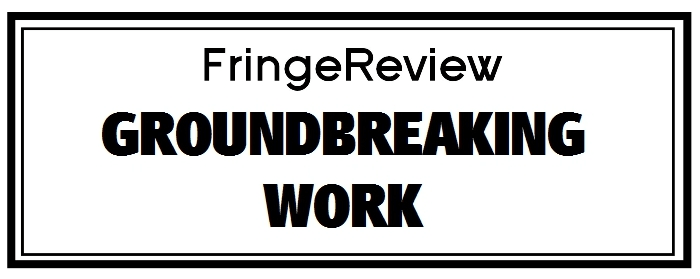Pittsburgh Fringe 2024
Seasons
Evening Crane Theatre

Genre: Drama, Experimental, Fringe Theatre, New Writing, Poetry-Based Theatre, Surrealism
Venue: Irma Freeman Center for Imagination
Festival: Pittsburgh Fringe
Low Down
The genius and beauty behind this production is that what I saw, felt, and interpreted, could mean something entirely different to the person sitting next to me and processed as another thing altogether to a person on the other side of the room. Seasons, somehow, manages to be as undefinable and
subjective as a dream.
An Evening Crane Theatre
production
Written & Directed by M. Seebold
Lighting Design by Garett Pembrook
Costume Design by Kevin Seebold
Prop Design by Judith Feingold
Show Poster by David Kudlac
Till April 21st
Review
After checking into the box office at the Irma Freeman Center for Imagination to see Seasons, presented by Evening Crane Theatre, I was directed toward a closed door across the lobby. I opened the door, presumably into the stage area, to find myself in a dark room with dimly flashing lights and a constant sound of thunder and rain. After allowing my eyes to adjust, I noticed the stage was already occupied with people, actors frozen in various poses. No, not frozen. Actors moving in dynamic and detailed slow motion, and the effect was enthralling. I felt self conscious at first, trying to find my way to a seat, feeling like I was interrupting a performance that was already started, and then I realized that was the point. The director of the piece, Micheal Seebold, didn’t allow the audience a moment to see behind the proverbial curtain, but wanted a seamless entry into pure atmosphere. And he was entirely successful. It set the tone for a production that would play out as an intoxicating blend of poetry, prose, and dialogue that resulted in a dreamlike theatrical experience.
The production then took us through all 4 seasons, but just one of many layers that added to the complexity of the piece is that each season seemed to represent a philosophy and an overriding emotion.
Fall’s story centered around a painting of red flowers, displayed in a hotel over a bar. The history of the painting was murderous, created alongside the painter’s dying wife as she bled the same haunting colors as the flowers. The pervading feeling was that the painting itself was enraged and wanted, if not revenge, to not have her pain exploited or forgotten.
Winter’s story took place on the blue banks of the sea where three travelers are hoping to catch sight of a famous sea monster. The monster becomes less important as mystery and obsession grows over the contents of one of the traveler’s cases. As characters become more distracted, an idea is presented that, that the present is in fact the past revisited, that one is able to choose a moment in one’s life to go back and relive and possibly change.
Spring’s vignette was the shortest (appropriate, I thought, as spring always seems just a fleeting transitional season), presented in green, and with the phrase, “You never taught me to grow old.” The scene continues with a newly composed song danced around a man obviously nearing the end of his life.
Summer completed the circle, devolving into the thunderstorm that we heard at the beginning of the production. Chimes moved by the wind of the storm were given literal poetic voice, as one character seemed to be trying to enjoy the experience as another was plagued by futility, and the lasting sentiment seemed to be, “I am this moment.”
The set was minimal, much of it mimed or implied, allowing for easy and fluid transitions, while lighting – design by Em Stripling – and sound effects created and maintained a constant and effective ambiance. A few projections on the wall throughout the play set up each vignette. There was no overhead lighting, only singular sources of light from corners of the stage, which sometimes flickered (as lightning in thunderstorms), bathing each vignette in its own themed color. The sound design was simple, giving rumbles of thunder and sea scape tides to place the vignettes.
The dialogue, also written by Michael Seebold, was a tapestry of concrete dialogue interwoven completely with stunning poetry prose with no transitions, giving the entire production a sense of constantly moving shifts and balances, keeping the unfolding stories feeling closer to dreams.
Each and every actor – they formed an impressive ensemble – was specific and entirely committed to every word and movement, easily delivering otherwise unnatural and untraditional dialogue with nuance and specificity; not an easy task in a piece so ethereal and pervious. One challenge I faced –
especially with such complex language – is that some parts felt rushed, making it difficult to keep up, and actors’ volume at times made it difficult to hear.
The genius and beauty behind this production is that what I saw, felt, and interpreted, could mean something entirely different to the person sitting next to me and processed as another thing altogether to a person on the other side of the room. Seasons, somehow, managed to be as undefinable and
subjective as a dream. I am not confident at all that what I took away from the production was what the writer or director or actors intended, and I think that was precisely the intent. With a spectacular variability of the experience, Seasons managed to be poetry embodied.


















































